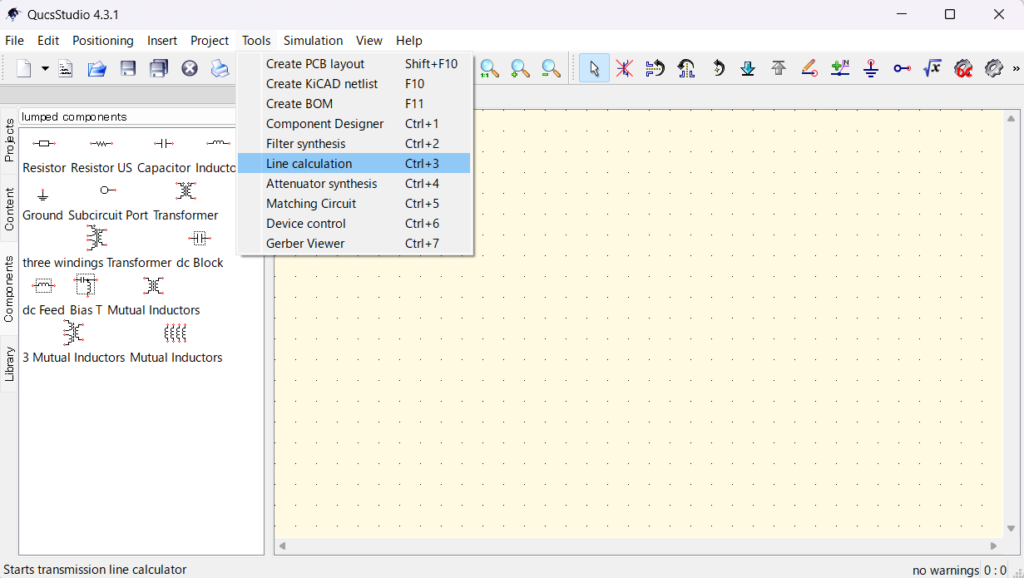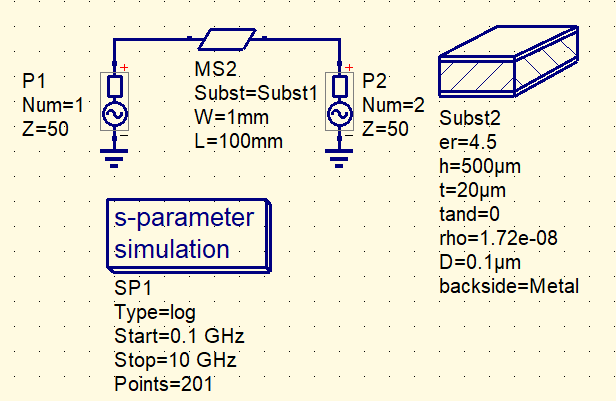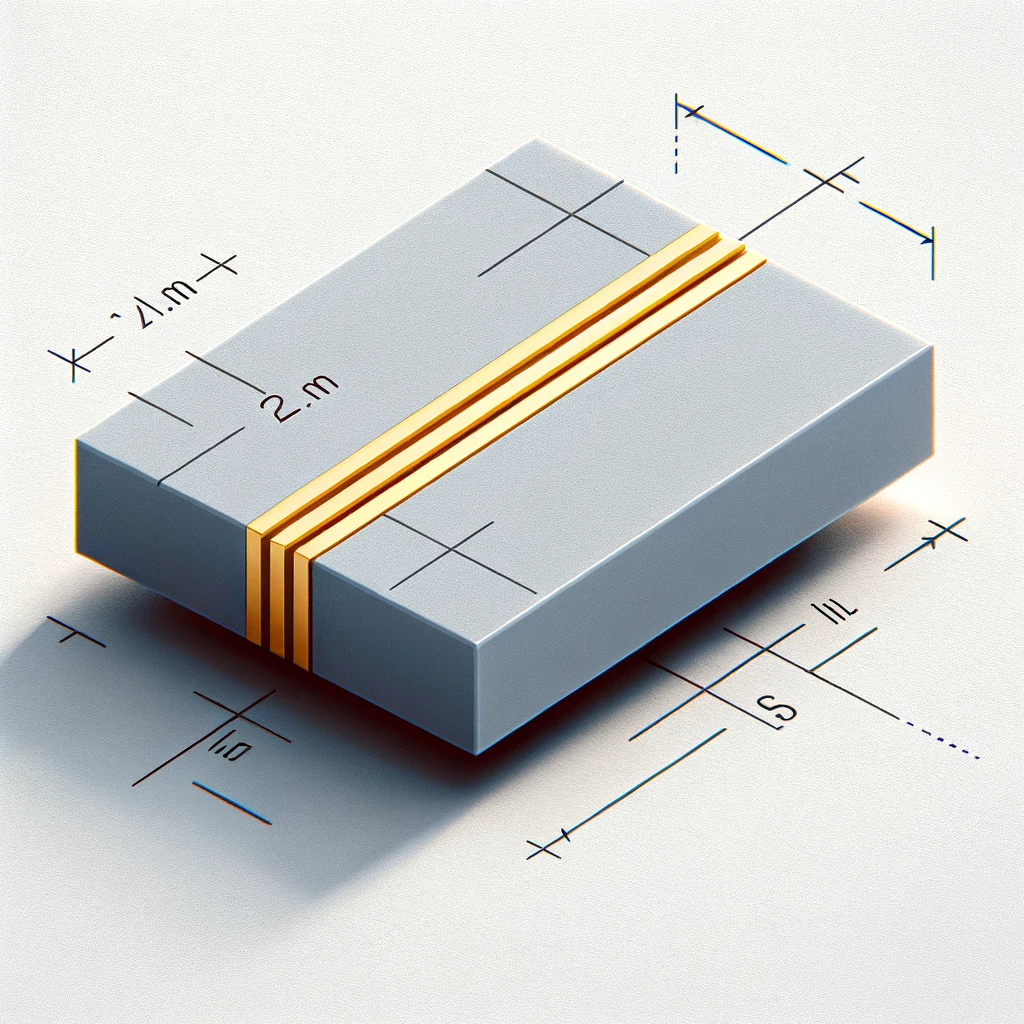The Transmission Line Calculator within QucsStudio is an incredibly useful tool for computing the characteristic impedance of transmission lines in electronic circuit design. In this article, we’ll explain how to calculate the characteristic impedance of a microstrip line using actual values.
Step 1: Launching QucsStudio and Selecting the Tool
First, launch QucsStudio and select ‘Line calculation’ from the ‘Tools’ menu on the toolbar.

Step 2: Entering Data for the Microstrip Line
To calculate the characteristic impedance of the microstrip line, input the following data:
- Dielectric constant (εr): For this example, we’ll use a dielectric constant for FR4 =
4.5. - Dielectric loss tangent (tanδ): If not considering the loss due to the dielectric, set this to
0. - Resistivity: Here, we’ll use
0.0001(resistivity of copper). - Permeability (Conductor μr): Use the permeability of copper as 0.999994.
- Conductor Surface Roughness: For this instance, we’ll consider it to be 0.1μm.
- Conductor Thickness (T): 20μm.
- Conductor Height (H): 500μm.
After entering these values, you’ll set the dimensions as follows:
Step 3: Entering Dimensions
Enter the dimensions for the PCB pattern you wish to simulate. For this example, we’ll use the following values:
- Width:
1.0 mm - Length:
100 mm
Step 4: Checking the Results
Based on the data input, QucsStudio will instantly display the calculated characteristic impedance. In this case, the result was 47.5176Ω.

Step 5: Utilizing the Calculation Results
The calculation results can be copied by clicking ‘Copy Component to Clipboard’, which can then be used for circuit simulation.

Additional Information
Here are the types of transmission lines that can be designed with the Transmission Line Calculator:
Types and Features of Transmission Lines
- Microstrip Line: A structure with one side as a conductor and the other as a dielectric substrate, with a narrow conductor strip on the top surface. Suitable for high-frequency applications, with comparatively simple design.
- Stripline: A conductor strip fully embedded within a dielectric substrate. It offers high resistance to external electromagnetic interference.
- Coplanar Waveguide: Comprised of a central conducting strip and ground planes on either side, all on the same plane. It offers low loss and is suitable for high-frequency applications.
- Coplanar Waveguide with Backside: Similar to a standard coplanar waveguide but with an additional ground plane on the backside. Offers high shielding effectiveness.
- Slotline: Features a narrow slot in a conductive plane, with open ends. Has asymmetric transmission characteristics.
- Coaxial Cable: Has an inner conductor and an outer conductor (shield) with a dielectric in between. Offers broad bandwidth and stable characteristics.
- Twisted Pair Cable: Two copper wires twisted together. Offers resistance to electromagnetic interference and is widely used in communication applications.
- Rectangular Waveguide: A waveguide with a rectangular cross-section. Supports transmission only at specific frequency ranges, mainly used in microwave applications.
- Coupled Microstrip Line: Multiple microstrip lines influencing each other. Used in filters and balun transformers.
- Coupled Strip Line: Closely spaced striplines utilizing coupling characteristics for filters and couplers.
- Coupled Coplanar Waveguide: Multiple coplanar waveguides in close proximity. Suitable for devices utilizing coupling effects.
- Coupled Coplanar Waveguide with Backside: Coupled coplanar waveguides with a backside ground plane. Offers high shielding and coupling properties.



Comment